
Chapter 7
MISSISSIPPI JOHN- - - BLUES THAT DON'T HURT
Mississippi John Hurt was a charming, sweet man and a major blues stylist, not necessarily in that order. His guitar work featured easier pieces than some others, but his music was the greatest! He was rediscovered in the early '60s, and came to New York, where he often hung out at the Folklore Center.
This was a second floor loft on Sixth Avenue and Third Street (after its move from its original location on MacDougal Street). The Folklore Center was filled with musical paraphernalia galore: instruments, books, weirdos, pickers--and occasionally Mississippi John. We'd run into him casually and gather 'round this unassuming legend. As he somewhat wistfully put it, "I sure wish I'd been rediscovered sooner!"
Hurt made the most out of simplicity (sort of a pioneering `energy conservationist'). In this piece he slides the normal G chord up and down the neck to play the melody.
Begin with a "normal" G chord: Ring finger on the fat 6th string bass note, the Middle on the 5th, and Pinky on the 1st strings. This is the grown-up way to play a G chord, so no griping! Believe me, it's easier to shift to G7 with this chord (because your left index is free).
Note the "deviant bass line" in Measure 2:

These are repeated in measures 4, 6, 8, and so on. This special bassline is a John Hurt trademark. It's also in our next piece.
Measure 3:
Slide the chord 'till the bass is on the seventh fret. Go right back to
the fifth fret at the end of the measure for the final note:
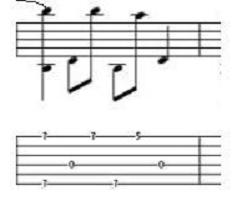
Then The G returns to its normal place (2nd-3rd frets).
This section repeats itself several times. Great for those evenings
after work when you're too tired to change chords.
Note the Left pinky moves in a G chord in Measure 15:
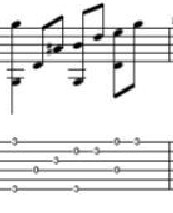
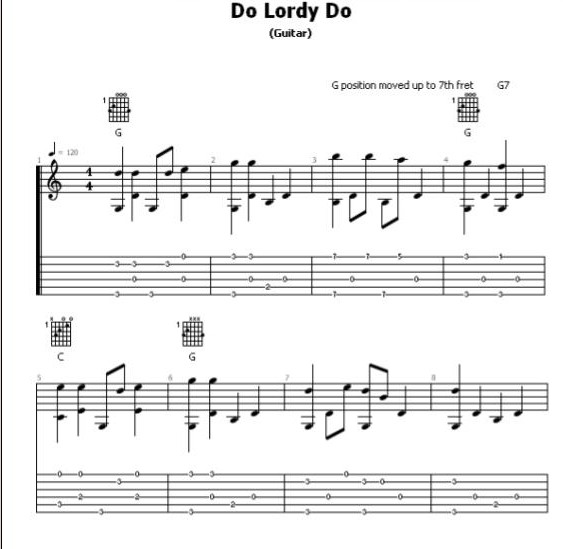

Once again, Mississippi John gets tremendous milage from one lousy chord. Perhaps he was exhausted from continually explaining his long name ("gee, Mr. Hurt, how do you spell Mississpppi again?"), and looked for easier left hand solutions.
Now that's just silly, Andy, but not as silly as the bass line here. The bass line is Backwards! This is called BACKPICKING, and it creates a gentler feel.
Start playing a G chord, but with a difference:
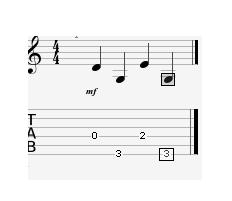
Now keep playing this four note, backwards bass line.
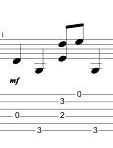
Note the G switches right here:
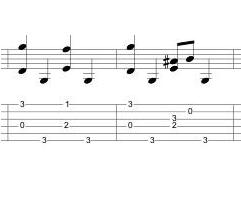
Measure 3 has a weird left pinky challenge on beat #3. The pinky has to play at the same time as the left middle finger (the "2" on the 4th string).
If you focus on measures 1, 2 and 3, you'll lick most of the obstacles here.
This piece repeats so much that learning the first few difficult measures really pays off--you just keep repeating them.
I guess I don't have to remind you to try the above practice measures a few times before launching into the full piece--do I?
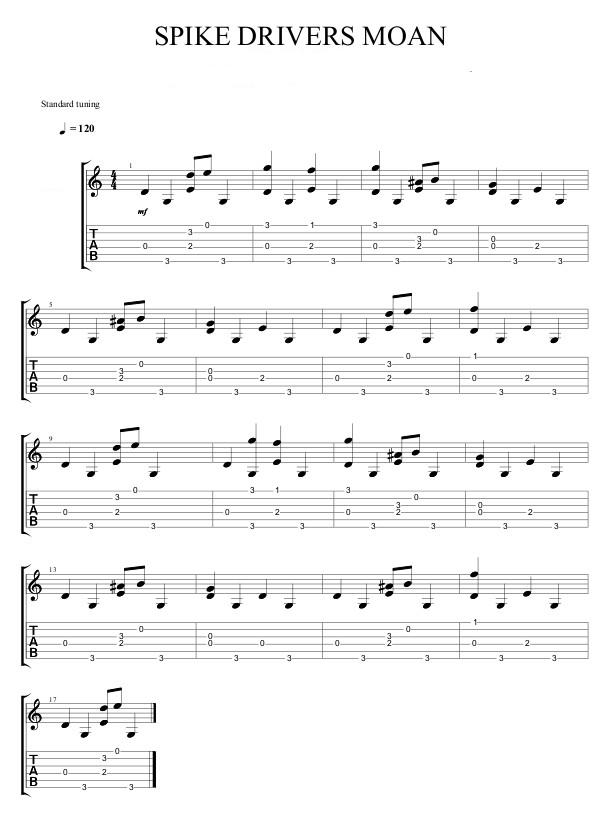
This is one of Mississippi John's most famous and catchiest arrangements. It uses the chord positions we know from Freight Train and simplifies them. The full F returns in all its splendor--tho the fainthearted amongst you will be temporarily reassured by Measure 2, the first F measure. It's just bass.
Now try Measure 3:
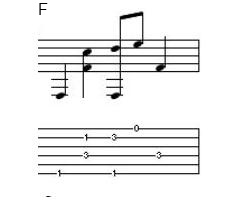
Whoa! In Measure 5, you shift to G in the MIDDLE of the measure:
Change from C to G in the middle of the measure
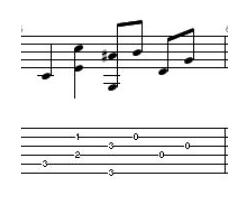
Anyhow, use your Left Pinky for the third string "a#" (the "3" on the third beat) at the same time you switch to the G chord, mid-stream.
It's starting to get easier, isn't it? That's because you struggled through the earlier pieces, and we're building on those techniques.
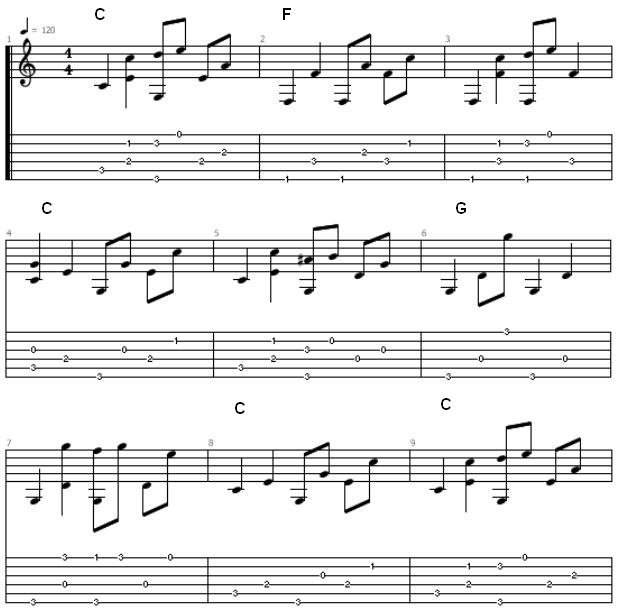

| Back to the Table Of Contents | Trouble reading tablature?: Tablature Help Here |
More info/contact Andy: www.andypolon.com